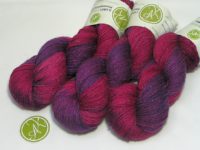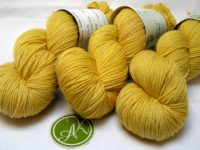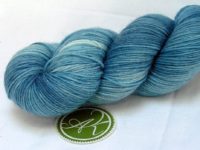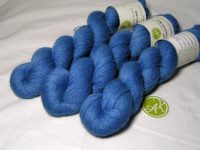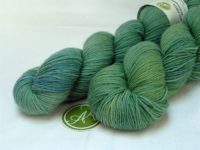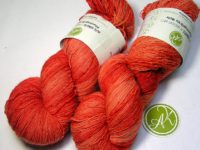Strickmich! Club 2020: Alte Künste
In this series of blog posts we will introduce the dyers who are providing the yarns for Strickmich! Club 2020.
Strickmich! Club is a subscription for four new knitting patterns by Martina Behm plus matching, exclusively dyed yarn. Sign-ups for the club year of 2020 will start in November on
www.strickmich-club.de.

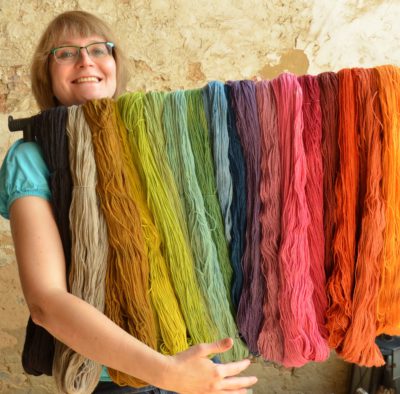
Margit and her yarns
Margit Hofmann used to be a wanderer between two very distinct worlds: During the week, she would work as a risk manager in an international bank in the city of Frankfurt, making sure that big chunks of money would be transferred correctly and on time. On the weekends, she would exchange her business attire with a medieval robe and perform at markets and festivals or open-air museums, showing visitors how spinning, weaving or naalbinding work. Being involved in this scene, Margit thought it might be a good idea to dye fine, modern yarns with plant-based dyes. “On the markets, I often saw chunky one-plies, but I knew that even in the medieval ages, people used finer yarns”, she said. When the bank she was working for wanted to transfer her to the investment banking branch, Margit drew a line: “It was the moment my PhD supervisor had warned me about – I had to make a decision between money and my conscience.”
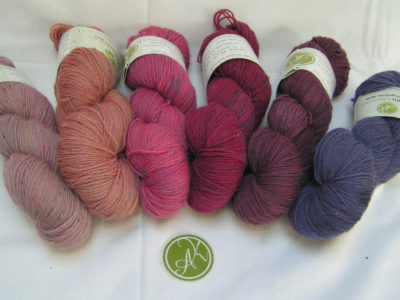
Yarn in Berry Tones
And that’s how Dr. Margit Hofmann became a small-scale entrepreneur, dyeing yarns for hand-knitters with botanical and natural dyes, using old recipes she researches and tests herself. “I want my colors to be wash- and lightfast”, Margit said. Some natural dyes are prone to decomposing when exposed to sunlight. Margit places her samples in a sunny window for a couple of weeks and determines with standardized color cards whether they are affected by light or not. Only if a new color passes the test it will become part of the “Alte Künste” (“Ancient Arts”) palette.
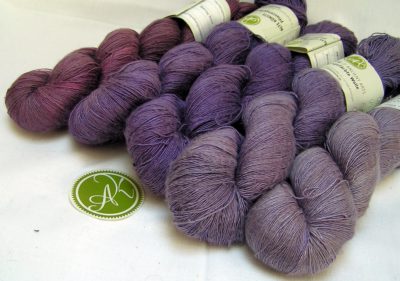
Variations of Purple
“There are tons of possibilities with plant dyes, there’s a great harmony of colors and you can combine any two of them”, Margit said. She dyes a whole rainbow of saturated colors – not what one would expect when hearing “plant dyes”. “We always think that people in former times only wore brown and grey before chemical dyes were invented”, Margit said, “but that’s just not true. In medieval times, bright and fun colors were all the rage and so intense that it would be quite unusual for our eyes.”
Dyeing with plants is always more work and uses more energy than dyeing with acid colors, as you often have to boil them for hours to get the essence you need. “But making chemical dyes also uses engery”, Margit said. “And plants are a sustainable resource – chemical dyes based on oil are not”. She hopes to spark enthusiasm for plant dyes with her colorful yarns: “Plant dyes have been forgotten in Germany for a long time – probably because we are the country that invented chemical dyes”.
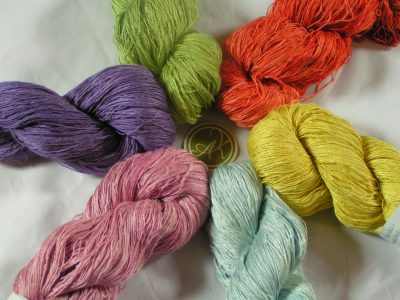
Colorful Silk
Margit loves to dye blue shades and her favorite yarn base is pure silk: “That’s a very hard base to dye, as colors tend to come out a little more pale than usual. But when I manage to dye a really vibrant, saturated color on silk, that’s a great feeling of accomplishment!”. She also knits a lot: “I am in a sweater and cardigan period right now, but I used to knit a lot of shawls out of exclusive fibers”.
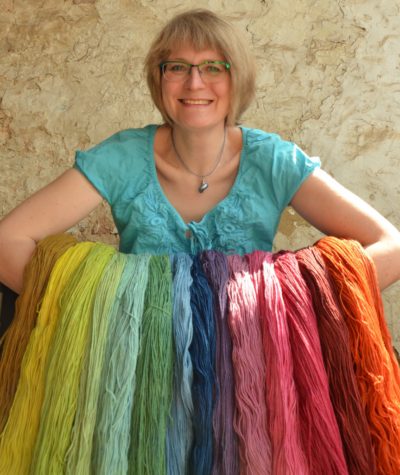
Ein ganzer Regenbogen!
We at Strickmich! are delighted that Margit decided to provide one of the yarns for Strickmich! Club 2020 – its color will be exclusive to club members for all time. Looking forward to having you, Margit!

